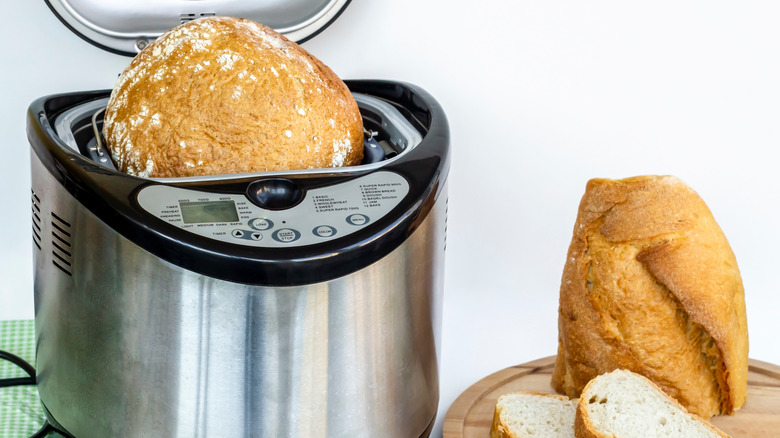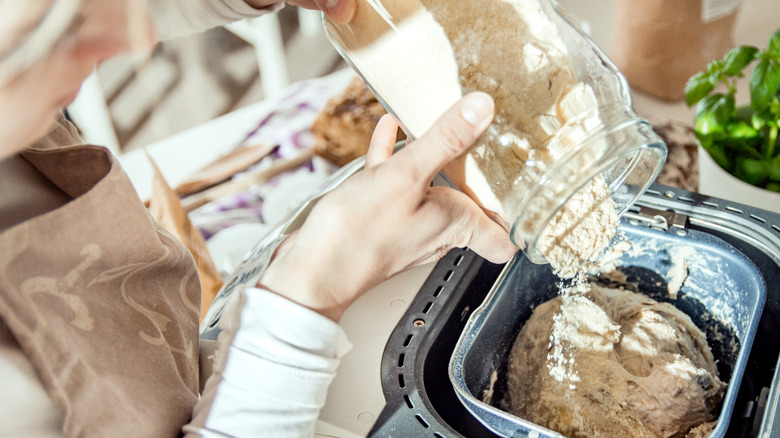What Makes Bread Machine Yeast Unique?
The origins of yeast go back by millennia to some of the earliest civilizations, per Explore Yeast. Its use as a leavening agent may be the most important discovery in the world of baking. The organism, which can be found in the air and on pretty much any surface, easily converts sugars into energy and releases carbon dioxide, causing dough to rise (via Scientific American). Because it's so good at this fermentation, storing it properly is important.
Since ancient times, there have been plenty of developments in the world of yeast and baking — and a key one to democratizing bread was the bread machine. Its invention changed bread-making by allowing folks at home to bake with less specialized knowledge, effort, and time (via Yuppie Chef).
The results might not be quite the same as what comes out of a bakery oven though. One reason for this is the use of bread machine yeast.
Bread machine yeast is fast-acting
Just like any other ingredient, there are different types of yeast. The first commercially-produced yeast started being sold during the 18th century, according to Explore Yeast. This development later led to the introduction of dried yeast, instant yeast, and even rapid-rise yeast, which further expedites the baking process.
Another variety is bread machine yeast. A distinction of this type is that it comes in smaller granules than those of other yeasts, meaning quicker rising (via Bread and Buzz). But a possible issue is that its speediness can actually end up diminishing the quality of your bread. As Bake Magazine explains, the longer the dough ferments, the more flavor and texture it gains. The purpose of bread machine yeast, however, is to leaven as quickly as possible, so the resulting bread may be less delicious.
To solve this issue, Bread and Buzz recommends using bread machine yeast for recipes including other flavors, such as vanilla or fruits. This way, there will be more taste to what could be an otherwise bland loaf.

